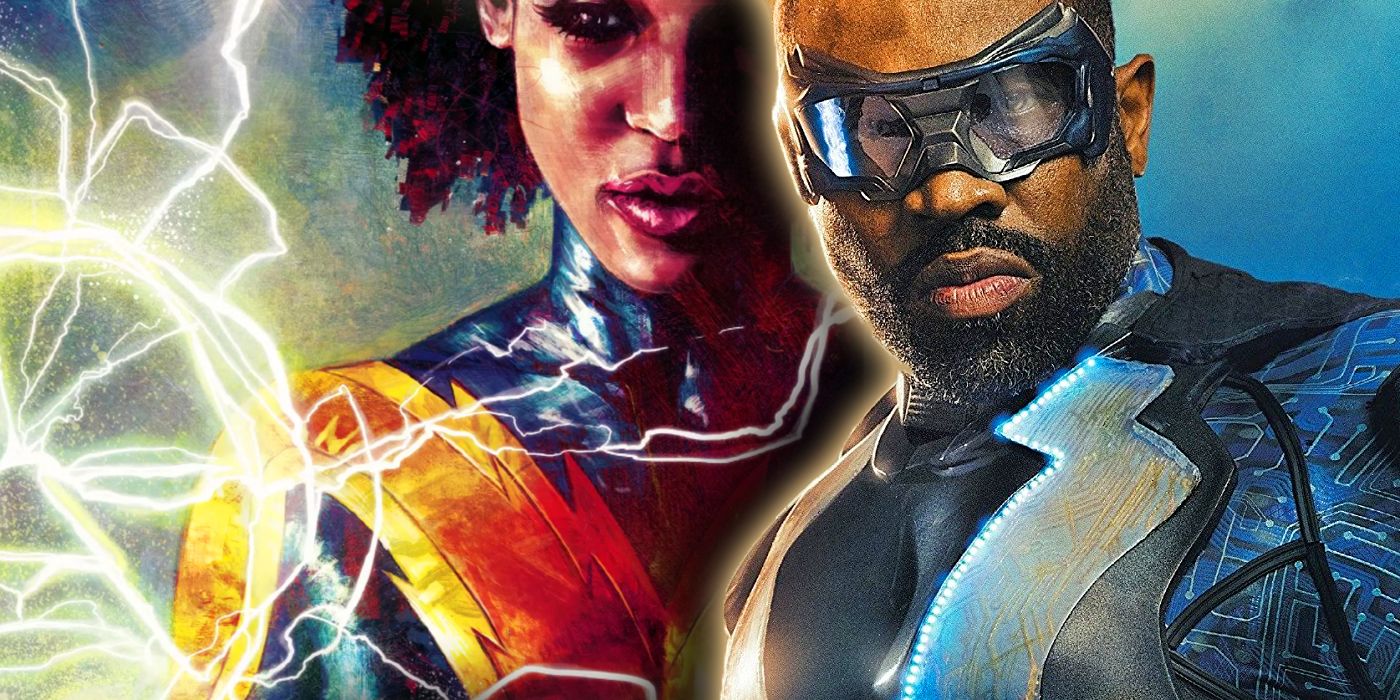Black Lightning’s daughter Thunder joined the second version of the Outsiders team, a DC team that started out as a mess and only got worse.
WARNING: The following contains spoilers for The Other History of the DC Universe #5, on sale now.
Black Lightning is regarded as one of the most level-headed of DC’s heroes. He is equally committed to helping people in and out of costume, having worked as an educator, community organizer, and school principal in his daily life as Jefferson Pierce. Though he was suspicious of the more established heroes, Black Lightning was one of the original members of the Outsiders, where he fought alongside such notables as Batman and Katana. Years later, his daughter Anissa Pierce took up the superhero name Thunder and joined the next incarnation of the team. She soon came to regret the decision, but by then, it was too late to quit.
Thunder’s time with the Outsiders was originally depicted in the early-to-mid 2000s, but this period of her life has been explored in greater depth in The Other History of the DC Universe #5 by John Ridley, Giussepe Camuncoli, Andrea Cucci and Jose Villarrubia. The comic is from Thunder’s perspective as she looks back on what it was like growing up in her father’s shadow. When Anissa developed her own powers and took up the codename Thunder, neither of her parents supported her decision. And when Roy Harper approached her to join his newest version of the Outsiders team, which he had started with Nightwing, she joined for just one reason: to upset her father.
It quickly became clear to Thunder that the team was a dysfunctional mess. Roy and Dick were primarily interested in using the Outsiders to cope with resentment toward their respective mentors, Green Arrow and Batman. They both vied to be the team’s leader, but each was as consumed by their hormones got as they were with actual superheroics. Other teammates included the jaded half-Amazon bruiser Grace and former Justice Society hero Jade, the daughter of the original Green Lantern who also joined to “navigate daddy issues.”
On one of the Outsiders’ first missions, they fought a demon called Sabbac who easily defeated them. Black Lightning showed up in the aftermath of the fight, demanding Thunder quit. When she refused, he bullied his way onto the team, which Dick readily accommodated. Thunder was mortified. She had joined the Outsiders to escape her overbearing father. Worse, he actually proved essential to the team, as his experience allowed them to finally defeat Sabbac. However, things soon devolved into further chaos.
Roy and Dick had appropriated team’s name from an earlier version of the Outsiders with Batman, Katana, and Black Lightning. While the other young heroes used their time on the team to work through psychological issues and sexual tension, Thunder was not given the freedom to do so while under her father’s watchful eye, since she remained in the closet about being a lesbian due to her father’s religiosity manifesting as homophobia. Meanwhile, Roy began to hook up with Grace, who was a survivor of sexual violence, in a move that was blatantly irresponsible and likely exploitative.
Thunder almost died fighting the Fearsome Five, leading to further conflicts within the team. After she recovered, she sought solace with Grace, and the two began a relationship, though they had to keep it secret. Things got worse when Black Lightning was jailed for a murder he had not committed. The Outsiders broke him out of a supermax prison. The warden unleashed poison gas, killing guards and inmates alike, and the team faked their own deaths to escape legal consequences.
They hid in the West African nation of Mali. The country’s President, Ratu Bennin, was using child soldiers in his genocide against the Remori people. The Outsiders might be in hiding, but could not stand idly by while this happened. Thunder infiltrated Bennin’s forces, then led the assault against him. She prevented further acts of genocide and brought Bennin’s reign of terror to an end. However, the presumed dead, mostly American superheroes caused an international incident by unseating a foreign leader. Batman stepped in and assumed control of the team, despite having no prior involvement to this version of the team. Eventually, Thunder quit.
This second Outsiders team was never going to work. Roy and Dick were not ready to lead, while most of the heroes were young, inexperienced, and lacked the psychological coping mechanisms they needed to function. Black Lightning’s experience helped them, but at the cost of Thunder’s personal well-being. The fact that they caused two back-to-back political incidents reveals just how unprepared the Outsiders were for real superhero work and why the very existence of this version of the team is questionable.
About The Author

